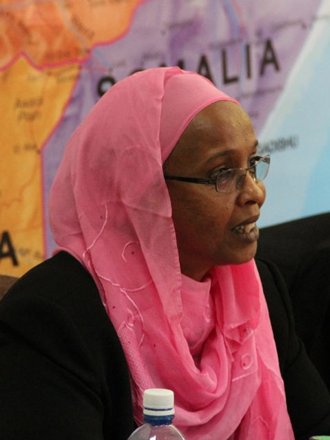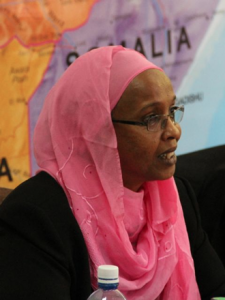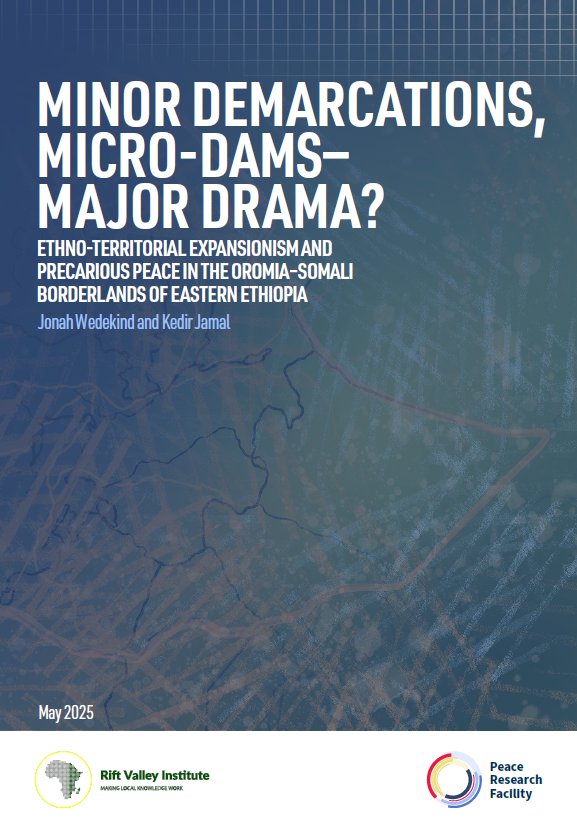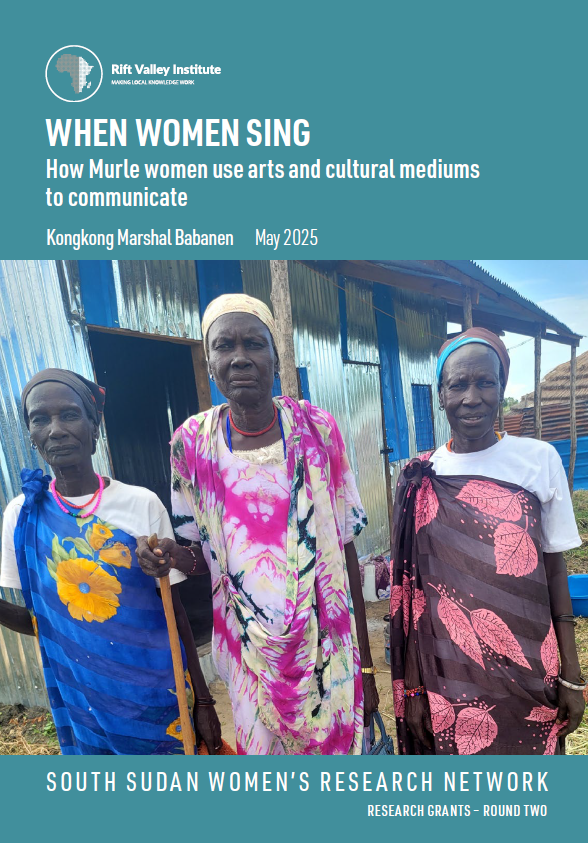Key points
-
Hybrid political orders are a reality in Somalia and have played an important role in political recovery and stabilization, but can become an obstacle to democratization.
-
War can serve as a tool of state-building and can create opportunities for women to be more active political players.
-
Despite the mixed results of devolved government in the region federalism in Somalia is most likely to achieve a unified state and social cohesion.
-
Sharia justice is more closely aligned with western notions of individual accountability and justice compared to customary law, which can encourage individual impunity.
-
Viable temporary governance has been achieved at a local level in Somalia, through both top-down and bottom-up processes.
-
Somali communities play a strong role in regional economies, enabling them to claim new rights and representation.
Introduction
Mark Bradbury, the RVI Horn of Africa and East Africa Regional Director, opened this joint event with BIEA to launch a special issue of the Journal of Eastern Africa Studies dedicated to Somalia.[1] This seminar was one of a series of talks on state-building in Somalia and an opportunity to explore significant changes occurring over two decades of statelessness.
Ambreena Manji, Director of BIEA, thanked RVI for a strong and growing partnership and recognized RVI’s community of regional scholars and researchers as natural partners enriching and setting the pace for BIEA’s work. She also acknowledged the strong support for the JEAS that has allowed it to expand from three to four issues annually.
Structural transformations in Somali society in the face of protracted war and state collapse
Chair: Cedric Barnes (International Crisis Group); Speaker: Markus Hoehne (Max Planck Institute); Discussant: Mohamed Abshir ‘Waldo’ (Centre for Humanitarian Dialogue)
Markus Hoehne provided a summary of several papers in this special issue of the JEAS, drawing together different perspectives on structural transformation over the last 22 years. Protracted statelessness has been hugely destructive but, he contended, has also demonstrated a transformative power as it provided opportunities for change, tested limits, and broke new economic, political and social ground in the Somali territories.
 Hoehne presented a paper by Dominik Balthasar – ‘Somaliland’s best kept secret: Shrewd politics and war projects as means of state-making’ – which challenges the established narrative that Somaliland achieved political change through peace-making. Instead, Balthasar argues, it was the civil war in the mid-1990s that provided the basis for successful state-building. The late President Egal emerged from war as a strong leader, playing the conflict to his advantage. Balthasar contests prevailing conceptions of the 1993 Boroma conference as an elder-driven process, instead situating it as a contestation between political elites and SNM hardliners, followed by strategic war-making.
Hoehne presented a paper by Dominik Balthasar – ‘Somaliland’s best kept secret: Shrewd politics and war projects as means of state-making’ – which challenges the established narrative that Somaliland achieved political change through peace-making. Instead, Balthasar argues, it was the civil war in the mid-1990s that provided the basis for successful state-building. The late President Egal emerged from war as a strong leader, playing the conflict to his advantage. Balthasar contests prevailing conceptions of the 1993 Boroma conference as an elder-driven process, instead situating it as a contestation between political elites and SNM hardliners, followed by strategic war-making.
Balthasar argues that peace-making and war in the mid-1990s were critical to the development of Egal’s personalized form of rule, and transformed Somaliland from a multi-clan fiefdom claiming statehood to one with a government superseding clans. While this success in building a stable political system should not be taken as a blueprint, important lessons can be drawn from Somaliland—especially that state-building is a long, messy, and potentially violent affair.
Hoehne discussed his own paper next, ‘Limits of hybrid political orders: The case of Somaliland’. This follows directly from Balthasar’s work, challenging the view of Somaliland’s government as a successful melding of traditional authorities and state institutions both contributing to a stable, balanced political order. He observed that since the colonial period, all Somali political orders have been hybrids. Colonial administrations incorporated traditional authorities and elders, who continued to play roles at the margins of the post-colonial state.
In the aftermath of the war and the overthrow of Somalia’s government traditional authorities in northwest Somalia (Somaliland) took on a prominent governance role and successfully created a stable basis for state-building. But, Hoehne contends, over time the legitimacy of traditional authorities waned among their clan constituencies, due to urbanization, and a growing dependence on government resources. Ultimately, he argued, this lead to an ‘unholy alliance‘, with elders in the Upper House of Parliament (Guurti) spared an election in 2006 by presidential decree, and President Daahir Rayaale Kaahin being repaid in 2008 by the Guurti prolonging his government’s term to 2010.
During this period the Somaliland government became increasingly authoritarian and traditional leaders supported the system against public protest. This contrasts with the characterization of hybrid political orders having the potential to deepen democracy and underpin stability. Hoehne proposed that the idea of a hybrid political order should be qualified and consideration given to its internal balance and its development over time. He argued that a crippled hybrid political system ultimately undermined both democratization and the legitimacy of traditional authorities.
Hoehne next presented Günther Schlee’s paper, ‘Customary law and the joys of statelessness: Idealised traditions versus Somali realities’, which assesses the effects of xeer and sharia as dominant conflict resolution mechanisms in a stateless Somalia. Schlee characterizes xeer as being focused on retaliation, with compensation used instrumentally to avoid retaliation and to end feuds. Despite an underlying egalitarian ethos in Somali society, he finds xeer resolutions to be defined by differential access to power and resources, and to be effectively promoting impunity, as norms of communal responsibility that existed in the past no longer prevail.
Schlee contends that sharia regimes under Al-Shabaab did away with impunity, establishing individual responsibility as a critical factor in addressing the huge crimes committed in Somalia over two decades of statelessness. The emphasis on individual responsibility mirrors Western preferences for individual accountability and ‘justice’, compared to customary law.
The final paper presented by Hoehne, ‘The impact of civil war and state collapse on the roles of Somali women: A blessing in disguise’ by Mohamed Ingiriis and himself, argues that although women have suffered disproportionately from the civil war and gender-based violence, the conflict also provided an opportunity for Somali women to establish themselves in political fields. Somali society, which is patriarchal to the bone, saw only very limited improvements for women in the post-colonial period, mostly in the labour market. The loss felt by men of their roles in society through war, injury, and unemployment opened a space for women, who actively supported militias as fighters or in supportive roles, created peace groups, and became household providers, establishing themselves in business and engaging in community development.
At the Djibouti Conference in 2000, women formed the ‘Sixth Clan’, demanding a non-clan based voice for women, and claimed a 10% quota in parliament. Civil war and collapse of the state has transformed their status and positions possible for women in Somali society, who are taking on new economic and political roles. Although this situation developed by chance out of civil war, real gains in economic and political visibility have occurred relative to 1991.
Mohamed Abshir ‘Waldo’ introduced himself as an urban elder with a nomadic background, as well as a journalist. He discussed a wide range of transformations experienced by Somalis over decades of statelessness. The principal changes, he noted, include civil war, destruction, warlordism, the development of a large and influential diaspora, rural empowerment due to the collapse of government and urban infrastructure, the rise of radical Islamism and Al-Shabaab. He emphasized the role of remittances as a lifeline for Somalis over the last 22 years. Valued, he estimated, at between US$ 2.5-3 billion annually, this compares with US$ 125-150 million in international aid.
He commented on the concept of hybrid political orders, with central government and traditional systems working together as well as against each other. This resulted in a quick transition and effective and permanent institutions in Somaliland. In Puntland in contrast, elders declined a formal role in government.
On balance, he argued, the changes were more negative, including increased clan fear and distrust, the destruction of the system of government and generalized looting of public infrastructure. He closed by asking what political system will improve trust among clans, will retain people and resources in rural areas, and will help Somaliland return to Somalia; he concluded that anything less than federalism will not reunite Somalia.
Authority and Administration beyond the State: Local Governance in Southern Somalia, 1995-2005
Chair: Fouzia Musse (Consultant); Speaker: Jutta Bakonyi (Durham University); Discussant: Marleen Renders (Life & Peace Institute)
Jutta Bakonyi drew on her paper, ‘Authority and administration beyond the state: Local governance in southern Somalia, 1995-2006’, for her discussion on the role of the Rahanweyn Resistance Army (RRA) in establishing core government functions in a regional government in the south-western Bay and Bakool regions. She noted that the establishment of the RRA administration had occurred in response to repeated regional invasions by USC-SNA (United Somali Congress – Somali National Army) and other militias, which were accompanied by massive violence and looting, and the disruption of agriculture leading to famine.
The rise of the RRA reinforced a strong Rahanweyn identity (subsuming the agro-pastoralist Digil and Mirifle identities) and strengthened their political positioning within transitional governments. Bakonyi emphasized that Ethiopian support for the RRA in the form of training, weapons, and ammunition was critical to their defeat of the USC-SNA and the establishment of district and regional administrations.
Elements that Bakonyi identified as essential to the relative success of RRA administration included: the revival of pre-existing administrative structures under UNOSOM, connections between the RRA and the local population, representation of local clans on District Commissions, the establishment of local police forces employing former RRA combatants, and localized control of taxation, primarily through transport sector levies and aid resources, channelled to fund security. RRA Chair Nuur Maxamad ‘Shatiguduud’ split from the TNG alliance in 2000 to join the Ethiopian-backed Somali Relief and Rehabilitation Society (SRRC), ultimately claiming the presidency of an autonomous region that included Lower Shabelle and Middle Shabelle and Lower Jubba, regions not controlled by the RRA. Bakonyi identified this division as a significant factor in the eventual splintering of RRA cohesion, which she believes ultimately allowed Al-Shabaab to take control in the region.
Marleen Renders expanded on these points, observing that similar outcomes have spontaneously arisen across the Somali regions, characterized by local clan-based authorities involving elders, business people and militias, with both functionalities and shortcomings, succumbing to outside forces even when (or perhaps as a result of) linking to larger and external entities. She gave the parallel example of the Gadabursi “Guurti of 21” in the early 90s, whose elders managed security and facilitated services with international NGOs, resulting in a few years of flourishing local administration. They joined the Somaliland National Guurti formed at the 1993 Borama Conference in which power previously held by SNM militias and President Tuur’s administration was transferred to the elders. Thereafter they controlled security, formalized peacemaking structures, and took a formal governing role at the highest level of government. Ultimately armed groups challenged the Gadabursi elders’ authority, and the limitations to their power were made clear.
Renders observed that Al-Shabaab still controls much of south central Somalia, excepting the borders and coastal region, and has been following a very different strategy, with power partially negotiated, partially imposed. Al-Shabaab control of these areas has been characterized by the expulsion of local militias, which are not integrated into Al-Shabaab forces; the performance of symbolic acts (i.e. stonings) to draw attention to the new regime; the strategic utilization of clan politics; the institution of Sharia, with egalitarian resolutions for both large and small clans, differentially privileged under xeer; and engagement in health, education, food production and taxation activities. She pointed to some flexibility in Al-Shabaab’s approach, in some instances working closely with local clan councils, revising leadership appointments. Publicly apologizing for misdoings, creating functional systems, employing non-local commanders, and successfully providing authority and security, despite being to a certain degree controlled by a national movement. She characterized Al-Shabaab as a classical example of state-making through war.
Somalis in Kenya, and Kenya in Somalia: Somali experience of Kenya as a state and state-builder
Chair: Zamzam Abdi Billow (CARE Somalia); Speaker: Jason Mosley (JEAS); Discussant: Ibrahim Farah (University of Nairobi)
Jason Mosley examined the experiences of Somali communities in Kenya, and of Kenya’s intervention in Somalia, centered around Neil Carrier and Emma Lochery’s ‘Missing states? Somali trade networks and the Eastleigh transformation’. He observed that Somalia does not end at the Somali border, rather that Somali trading networks fluctuate and fill spaces where opportunities arise across the region, and situated this paper within a small but emerging literature on these networks and on the Eastleigh estate in Nairobi. Generational developments in the Somali diaspora were traced through their manifestations in the historical development of the estate, particularly the development of malls and their influence on commercial development in the broader Nairobi economy. Generating highly valuable tax revenue and with commercial properties anchored by Kenyan ownership, attempts by the Kenyan state to restrict and marginalize the various Somali communities in Eastleigh have been contested as new constitutional rights are claimed and financial realities are acknowledged by the state. The paper probes the dynamics of trade networks and localized business practices in Eastleigh as well as local experiences with security, representation, service delivery and taxation. Eastleigh residents continue to experience intimidation through policing and raids in the estate as a result of sporadic violent attacks that have followed Kenyan intervention in Somalia in late 2011. The rising social tensions have been mitigated by significant improvements in representation, regulatory mechanisms, and services since the election of MP Yusuf Hassan.
Moving beyond the scope of the paper, Mosley also probed the experiences of Somalis in Somalia encountering Kenya as a state-builder. He raised concerns about the destabilizing effects of the Jubbaland project on the new Somali state as it grapples with issues of federalism in the provisional constitution. He also noted that Kenya’s economic interests in the LAPSSET (Lamu Port and South Sudan Ethiopia Transport Corridor) project, may conflict with its stated interests in Somali stability. He closed by questioning why Kenya’s first major foreign military engagement did not appear on the presidential campaign agendas in the 2013 elections in Kenya. He noted the failure of Kenyan media to interrogate the complexities of the intervention, as well as the possible ultimate incompatibility of Kenya’s Jubbaland initiative with its state-building rhetoric and the achievement of regional stability.
Ibrahim Farah, introducing himself not only as an academic but as an Eastleigh resident and a Somali, concurred on the need to understand Somali trade networks as an important element of the Somali sphere as they transcend borders. He argued that experiences of Somali communities, including diaspora visitors and investors, Somali Kenyans, refugees, and others have been complex – characterized both by exclusions and repressions, and by comparative freedoms and continuing Somali support for the Kenyan state. He proposed that the experience of Somalis in Kenya be considered in pre-1991 and post-1991 periods, with early migrants demonstrating strong entrepreneurial attitudes, and presenting a challenge to the Asian business community, despite social integration being affected by the 1963-67 conflict in northeastern Kenya. Post-1991 migrants, he asserts, have experienced a re-emergence of social and academic freedoms, with the population being taken more seriously in light of their economic contributions and the strong representation of Yusuf Hassan, as well as the influence of the ongoing military intervention and reprisals.
Farah challenged the common assumption of Al-Shabaab responsibility for recent attacks in Eastleigh, noting both the uncharacteristic features of the bombings and the unlikely political confluence that would be required to explain their targets. Retaliatory round-ups of ‘aliens’ has fuelled resentment among Kenyans of Somali descent, particularly in light of recent constitutional gains by the community. The importance of Somalis as local employers (he estimated two to three local jobs are lost with each repatriated Somali) and the community’s contribution to tax revenue have caused rapid reassessment of these policies. Numbers of Somalis departing are unclear, with estimates varying widely and no accurate statistics.
Farah predicted failure for the Jubbaland project, as it neglects to draw on previous structural arrangements or to engage stakeholders, as the Somaliland and Puntland processes did. He sees a lack of local support, as well as issues arising over boundaries, revenue sharing, and impediments to the formation of civil movements. He asserted a strong connection between Kenya’s national interests in Somalia and those of international diplomacy, and agreed that Kenya’s approach to Jubbaland is not compatible with the obligations of a peaceful state. He argued that the key issue is not Jubbaland, but Kismayo, which has proven beneficial for Kenyan interests. In response to audience questions he responded that the ultimate destination of profits being made in Jubbaland and Raas Kambooni are not known, but that the interim administration in Mogadishu is not receiving them, and the Kenya Defence Force have also denied profiting in the region. He concluded that it is too early to know what Kenya’s legacy will be in the region. He advocated for a constructive political dialogue among various Somali actors: after achieving peace, it will be possible to engage in a substantive political process.
Notes
[1] Journal of Eastern African Studies



